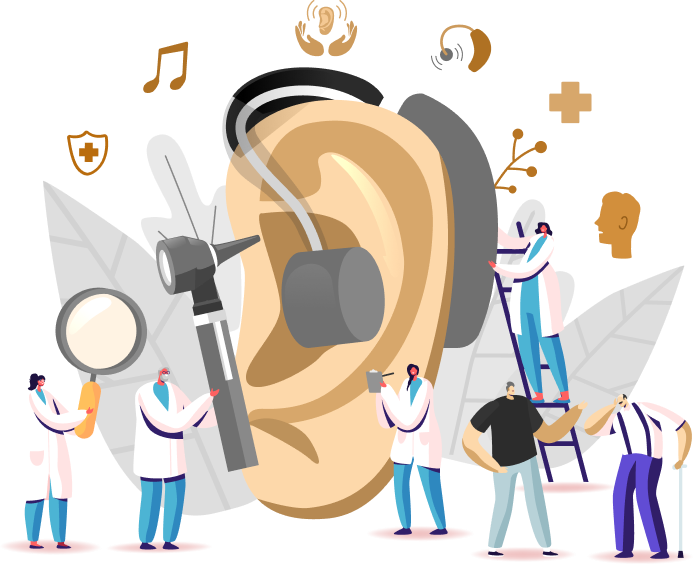
Types of Hearing Loss:
1. Sensorineural Hearing Loss (SNHL)
Cause
Damage to the inner ear (cochlea) or the auditory nerve pathways to the brain.
Common Causes
Aging (presbycusis)
Noise exposure
Genetics
Certain medications
Head injury
Diseases like Meniere's disease
Characteristics
Damage to the inner ear (cochlea) or the auditory nerve pathways to the brain.
2. Conductive Hearing Loss
Cause
Obstruction or damage to the outer or middle ear, which hinders sound transmission to the inner ear.
Common Causes
Earwax blockage
Middle ear infections
Fluid in the middle ear
Ear canal abnormalities
Characteristics
Sounds may be muffled or quieter, and it may be particularly challenging to hear faint or high-pitched sounds
3. Mixed Hearing Loss
Cause
Combination of sensorineural and conductive hearing loss.
Common Scenario
For example, an individual might have age-related hearing loss (sensorineural) along with an ear infection (conductive).
Degrees of Hearing Loss
1. Mild
Difficulty hearing soft sounds, like whispers or distant speech.
2. Moderate
Difficulty hearing regular conversation, especially in noisy environments
3. Severe
Difficulty hearing even loud speech and may rely on amplification (like hearing aids).
4. Profound
Extremely limited ability to hear, even with amplification.
Impact and Consequences
 Difficulty understanding speech, especially in noisy environments.
Difficulty understanding speech, especially in noisy environments.  Strained conversations with family, friends, and colleagues.
Strained conversations with family, friends, and colleagues.  Social isolation and withdrawal due to communication difficulties.
Social isolation and withdrawal due to communication difficulties.  Feelings of frustration, depression, and anxiety.
Feelings of frustration, depression, and anxiety.  Untreated hearing loss may be linked to cognitive decline and an
increased risk of conditions like dementia.
Untreated hearing loss may be linked to cognitive decline and an
increased risk of conditions like dementia.  Difficulty hearing warning signals, alarms, or approaching vehicles
Difficulty hearing warning signals, alarms, or approaching vehicles 
Diagnosis and Treatment
1. Audiological
Evaluation
Includes a series of tests to assess the type, degree, and configuration of hearing loss.
2. Treatment Options
Hearing Aids: Amplification devices for sensorineural hearing loss.
Cochlear Implants: Suitable for severe to profound hearing loss where hearing aids are insufficient.
Bone-Anchored Hearing Aids (BAHA):An option for conductive or mixed hearing loss.
Medical Intervention: May be necessary for specific cases, like ear infections.
3. Communication
Strategies and Training
Includes a series of tests to assess the type, degree, and configuration of hearing loss.
4. Regular Monitoring
Periodic evaluations are essential to adjust treatment and address any changes in hearing.
